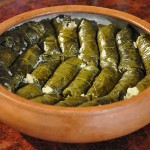The period of 48 days, preceding the Easter, the Resurrection of Jesus Christ, is the Great Lent. It begins on the Monday succeeding the Main Shrovetide, this year the 7th of March, and ends on the Easter Sunday, this year 24th of April. Shrovetide, in general, is the preceding day of fast, when only moderate feasts, games and different dishes are allowed. It means liveliness, good life, and the Main Shrovetide precedes the longest fast, the Great Lent. During the Great Lent food of solely plant origin is used. It not only tempers the person’s will and strengthens spiritually, but also is very useful for the health as the person’s organism gets free of the indigestible food of animal origin, the metabolism is improved, the immune system is strengthened. During this period, people should get rid of bad habits, garrulity and falsity, should be away from guilts. It is necessary to repent and pray. The Great Lent has seven Sundays: Sunday of the Main Shrovetide, Sunday of the Expulsion, Sunday of the Prodigal Son, Sunday of the Steward, Sunday of the Judge, Sunday of the Advent and Palm Sunday, and on the basis of each there is a Biblical story.
The Sunday succeeding the Main Shrovetide, the Sunday of the Expulsion, is the second one of the Lent period. It is connected with the expulsion of Adam and Eve from the Paradise. The third one, the Sunday of the Prodigal Son, refers to the fable of the prodigal son, which shows the way of repentance. The forth one, the Sunday of the Steward, tells that every person should try to master his/her life, intelligence and talents wisely. The fifth one, the Sunday of the Judge, has the meaning of continuing to live in prayers. The sixth one, the Sunday of Advent, reminds of the first and the second Advents of the Savior. On the seventh Sunday the Palm Sunday is celebrated which commemorates the entry of Jesus into Jerusalem, when people greeted Him with branches of palm. These 40 days of the Lent symbolize the period of Jesus’s prayer, fast and repentance during 40 days in the desert. Then the last period of the Great Lent – the Holy Week comes, and all the 48 days of the Lent are being over. The day which halves the Great Lent is called “mijinq”. According to folk customs, that day gata is made and a coin is put there. The person who gets the coin will be a success. The Great Lent ends on the Easter which symbolizes the Resurrection of Christ and is celebrated with great solemnity and folk customs.
The Great Lent
Back To Top










